Invented by Barrie A. Loberg, Joseph S. Howell, Robert Blodgett, Sheldon Smith, Tyler West, DIRTT Environmental Solutions Ltd, Armstrong World Industries Inc, DIRTT Environmental Solutions Inc
Virtual reality (VR) has revolutionized various industries, and one of the sectors that has greatly benefited from this technology is architecture. Architectural design software programs combined with VR immersion have opened up new possibilities for architects, designers, and clients alike. This article explores the market for virtual reality immersion using an architectural design software program and the impact it has had on the industry.
Virtual reality immersion allows architects and designers to create immersive, interactive, and realistic 3D models of their designs. By wearing a VR headset, users can explore and experience the space as if they were physically present. This technology has transformed the way architects present their designs to clients, as it provides a more engaging and realistic representation of the final product.
The market for virtual reality immersion in architecture has experienced significant growth in recent years. According to a report by MarketsandMarkets, the global market for VR in architecture and design is expected to reach $2.76 billion by 2023, growing at a compound annual growth rate (CAGR) of 16.61% during the forecast period. This growth can be attributed to several factors.
Firstly, virtual reality immersion enhances the design process by allowing architects to visualize their ideas in real-time. They can make changes and modifications on the spot, improving efficiency and reducing errors. This saves both time and money in the long run.
Secondly, VR immersion provides clients with a more immersive and interactive experience. Instead of relying on 2D drawings or static 3D models, clients can now walk through the virtual space, getting a better sense of the scale, proportions, and overall design. This helps clients make informed decisions and ensures that their expectations are met.
Furthermore, virtual reality immersion has also become a powerful marketing tool for architectural firms. With VR technology, firms can create virtual tours of their projects, allowing potential clients to experience the space before it is even built. This not only helps in attracting new clients but also strengthens the firm’s reputation as an innovative and forward-thinking company.
Several architectural design software programs offer virtual reality integration, further driving the market growth. Programs like Autodesk Revit, SketchUp, and ArchiCAD have incorporated VR capabilities into their platforms, making it easier for architects to create immersive experiences. These software programs provide tools for creating 3D models, rendering realistic materials and lighting, and even simulating real-world physics.
However, challenges still exist in the market for virtual reality immersion in architecture. The cost of VR equipment and software can be a barrier for smaller architectural firms or individual architects. Additionally, there is a learning curve associated with using VR technology, requiring architects to invest time and resources in training.
Despite these challenges, the market for virtual reality immersion using architectural design software programs is expected to continue growing. As technology advances and becomes more affordable, more architects and designers will adopt VR as a standard tool in their workflow. The benefits of VR immersion in architecture, such as improved design visualization, enhanced client communication, and effective marketing, make it a valuable investment for the industry.
In conclusion, the market for virtual reality immersion using architectural design software programs is experiencing significant growth. The ability to create immersive and interactive 3D models has transformed the way architects present their designs and collaborate with clients. As the technology becomes more accessible and affordable, virtual reality immersion will become an integral part of the architectural design process, revolutionizing the industry and pushing the boundaries of creativity and innovation.
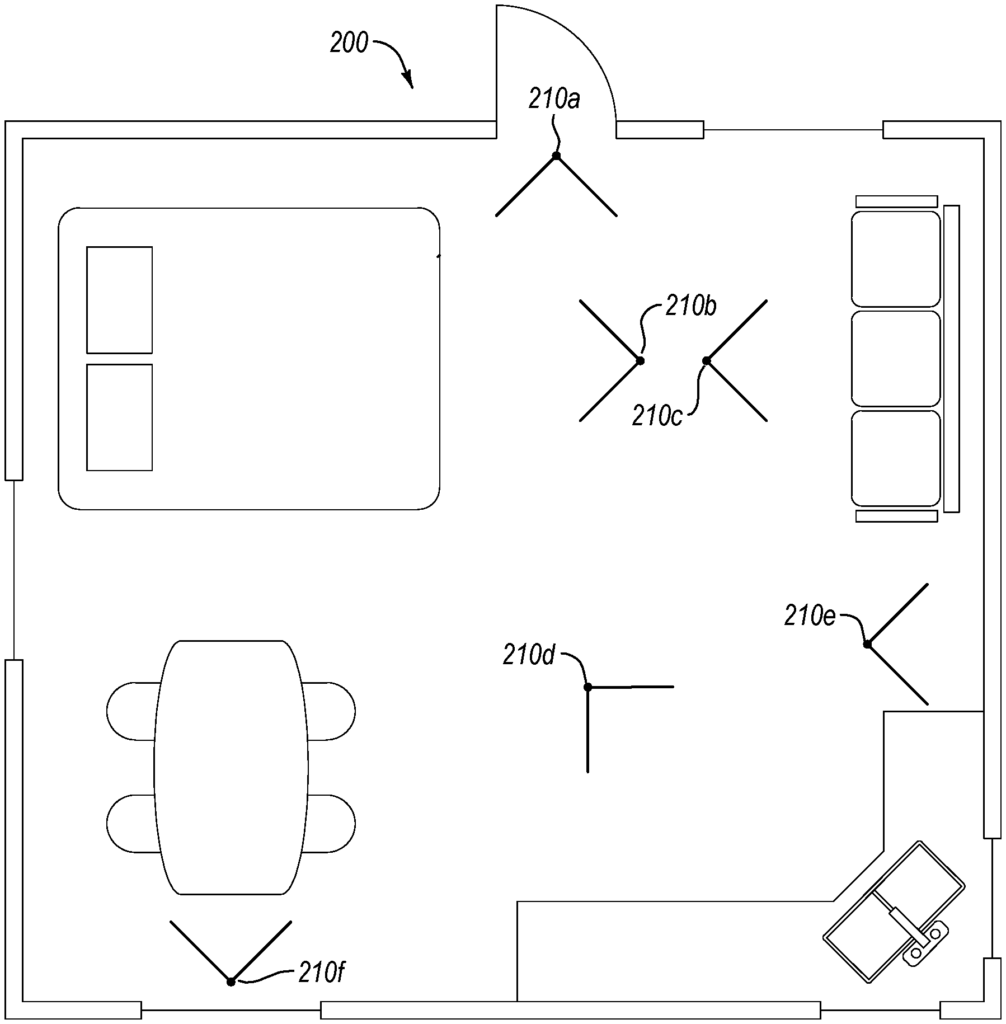
The DIRTT Environmental Solutions Ltd, Armstrong World Industries Inc, DIRTT Environmental Solutions Inc invention works as follows
A virtual-reality system can consist of a virtual-reality headset, one or multiple position tracking sensors and an architectural design computerized environment. Position tracking sensors can determine a user’s relative position in relation to a physical environment. The computerized design environment can include a method that is computer-implemented for displaying to the user a three-dimensional representation of an architectural design through one or more virtual realities components. The method can include receiving a communication via the one or multiple position tracking sensors, rendering a minimum portion of an architectural file, and sending the rendered portion to the virtual reality headgear.
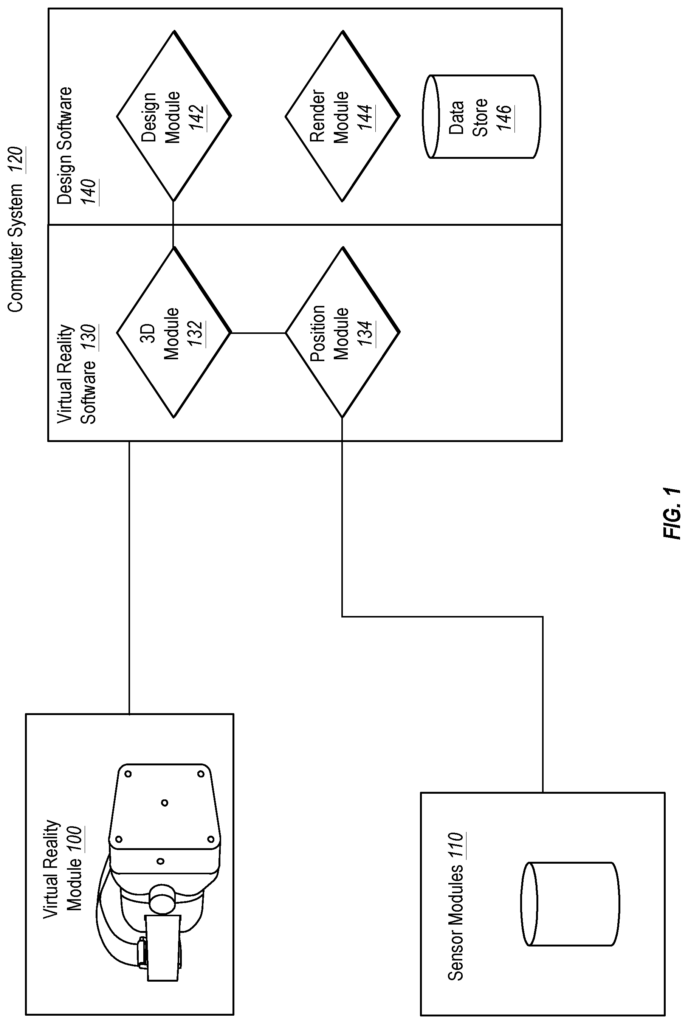
Background for Virtual reality immersion using an architectural design software program
1. “1.
The present invention is a computer-aided design software.
2. “2.
As computerized systems became more popular, the number of applications that use computational technology has also increased. The computational technology is now used in a variety of software applications including productivity and entertainment. In fact, computational technology, and software related to it, can be found in many generic applications, which are suitable for a variety of environments, as well industry-specific software.
The building and/or architecture design industry is one that has used specific software types and other computational technologies more and more in recent years. Architects and interior designers are two of the most prominent examples. In particular, architects and interior designers (?or designers?) use a variety of computer-aided software (CAD) or building information software (BIM), (i.e.?architectural software applications?) For designing both the functional and aesthetic aspects of a residential or commercial space. A designer could, for example, use a CAD program or BIM to design a whole building or part thereof, and then use drawings or information from the program to order or produce building components.
Modern CAD and BIM programs offer the capability to view a three-dimensional representation of an architectural design. It can be a great benefit to clients and designers who want to see a design in three dimensions before they start the building process. In at least one traditional system, for example, the user can view a fully rendered office building on a computer. The user may be allowed to navigate through the three-dimensional renderings so that they can see different perspectives throughout the design.
While conventional three-dimensional renders are able to give a user a general impression of a product’s final appearance, they have several flaws. The navigation of traditional three-dimensional renderings is cumbersome when a user wants to see a particular view of varying features. Moreover, traditional systems may be unable to accurately portray the scale of an end product. A user’s view on a three-dimensional computer rendering may not convey the full scale of an item or design.
Accordingly, there are several problems that can be solved in the field of art.
Implementations” of the present invention include systems, methods and apparatus that allow a user navigate within a three dimensional rendering of an architecture design. Implementations of the invention include virtual reality components which create an immersive virtual environment. The virtual reality components can include a headset which covers the eyes of the user and tracks their viewing angle, as well as various motion tracking modules to track the user?s head movement and/or rotation. The virtual reality components are able to be used to create a virtual environment which allows the user to interact in new and useful manners with an architectural design.
A virtual reality system, for example, can consist of a virtual-reality headset, one or multiple position tracking sensors and a computerized architecture design environment. Position tracking sensors can determine a user’s relative location in relation to a physical environment. The computerized architecture design environment can include a method that is computer-implemented for displaying to a user a three-dimensional design of an architectural design through one or more virtual-reality components. The headset can track angle of view in relation to physical space and architectural design.
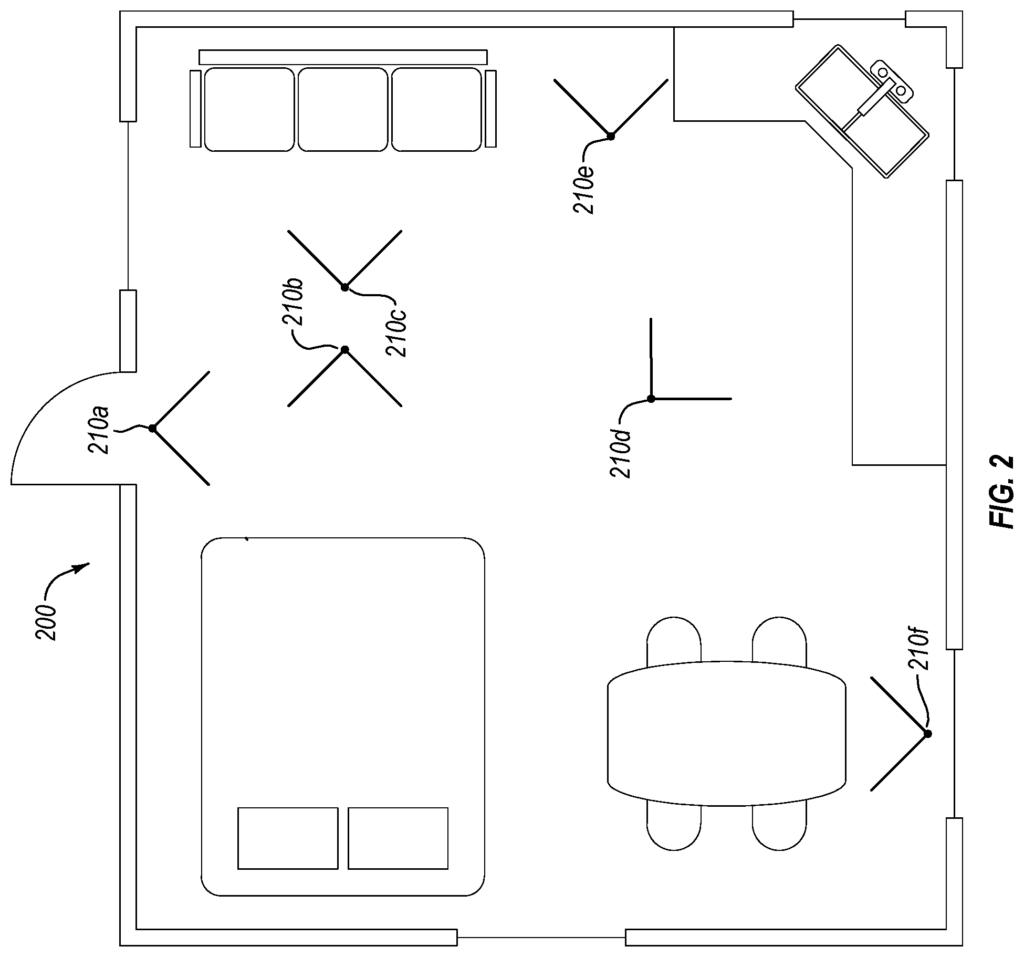
The method may include receiving a message from one or more sensors for tracking position. The communication may include an indication of the relative direction in which the virtual reality headset faces. The method may also include rendering at least part of an architectural design. The rendered portion can be a three-dimensional picture that is oriented in the same direction as the virtual reality headset. In at least one implementation the rendering can be a dynamic rendering which gives an impression that a user is viewing a real-time image of a 3-D space. The method can also involve sending the rendered part of the architectural design to the virtual reality head-set.
The description of exemplary implementations will include additional features and benefits. These will either be apparent from the description or can be acquired by practicing the exemplary implementations. These features and benefits can be obtained and realized by using the instruments and combinations specifically mentioned in the appended claim. The following description and the appended claims will make these and other features more apparent, or they can be learned through the practice of the exemplary implementations that are described hereafter.
The present invention includes systems, methods and apparatus that allow a user navigate in a three-dimensional rendering. Implementations of the invention include virtual reality components which create an immersive virtual environment. The virtual reality components can include a headset which covers the eyes of the user and tracks their viewing angle, as well as various motion tracking modules to track the user?s head movement and rotation. The virtual reality components are able to be used to create a virtual environment which allows the user to interact in new and useful manners with an architectural design.
Accordingly, the implementations of this invention provide a platform that allows a user see and navigate through a virtual-reality view of an architecture design. This view has many benefits for the user and solves many of the problems that have been encountered in previous art. While architectural design software has offered three-dimensional rendering for many years, it can be difficult to gauge the size of objects when viewing a computer rendered image. Contrary to conventional art, the implementations of the invention allow a user view an architectural design as if they were within the designed space. The user will get a realistic impression of the size and design features of the space.
At least one implementation provides an enhanced reality experience to a user. In at least one implementation, the user can enter an office that has been gutted and is currently being redesigned by an architect firm. The user can activate and wear the virtual reality components once they are in the office space. Virtual reality components can immerse users in a rendering of an office space designed by the architect firm. As the user moves or walks around the space, virtual reality components can display the correct view according to the user’s movement. A user can therefore view a virtual representation of a completed design space before it is built out.
For example, FIG. According to implementations of the invention, FIG. 1 shows a virtual reality module (VR) 100, sensor modules (Sensor Modules 110), and a computer system (122) in accordance. In one implementation, components 100,110,120 can communicate wirelessly (e.g. WIFI, BLUETOOTH or LTE). Physically (e.g. Ethernet, USB Thunderbolt, HDMI etc.). In at least one implementation the different components 100,110,120 can also be segmented and integrated in relation to each other. In at least one implementation one or more sensors 110 can be embedded within the virtual-reality module 100. In a similar way, a portion of computer system 120 may also be integrated into the virtual reality module.
In at least one implementation the computer system comprises design software 140 and virtual reality software 130. Alternate implementations can include the execution of the design software 140 and virtual reality software 130 by separate computers, or by the virtual module 100, or by the sensor modules 110.
The design software 140 may include a design module, a rendering module, and a database. The design module can allow a designer to create a three-dimensional model. At least in one implementation, a designer can manipulate and create a three-dimensional design using a desktop computer. The desktop computer can also be in contact with the virtual-reality module 100 or the sensor modules 110.
The user can then view the architectural design on a desktop computer. The render module 144, in particular, can render a 3-dimensional view of the design. The user can then navigate the three-dimensional model on the desktop computer. The architectural design may also be stored in the data store 146 where it can later be accessed.
According to an implementation of the invention, a user who wants to see a virtual rendering of an architectural design can wear a virtual module 100. A virtual reality module 100 may include a headset or other similar device in at least one implementation. The headset can completely cover the eyes of the user, so that they are completely immersed in the images displayed by the headset.
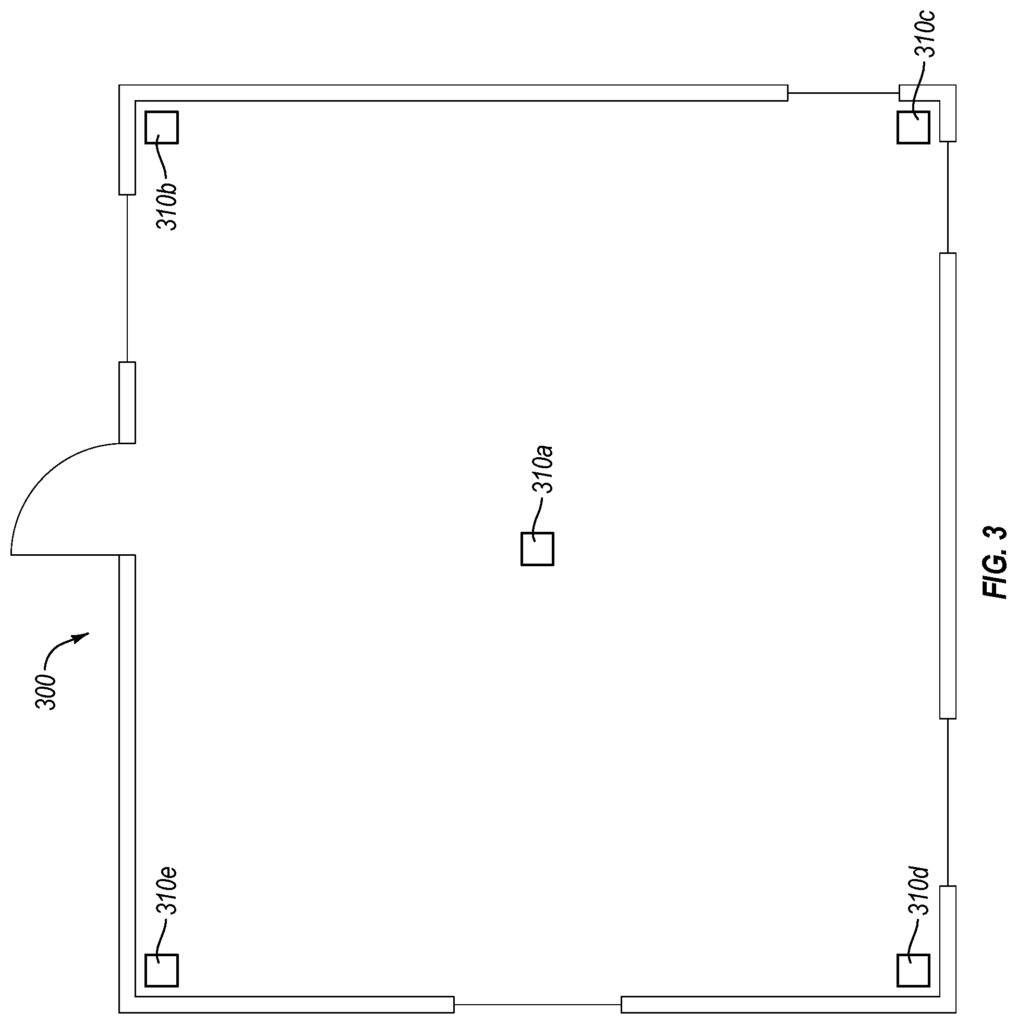
Also, the user may activate one or multiple sensor modules 110. In one implementation, one or more of the sensor modules 110 can be a sensor that’s disposed inside the virtual reality module. In at least one implementation activating the virtuality module 100 can activate a sensor 110. Sensor modules 110 can include various motion tracking components. Sensor modules 110 may include, for example, accelerometers and gyroscopes. They can also contain GPS, sonars, magnetic tracking systems or barometric systems. One or more sensors can be placed within the virtual-reality module 100 so that it can track perspective data, without external sensor modules or with external sensor module 110.
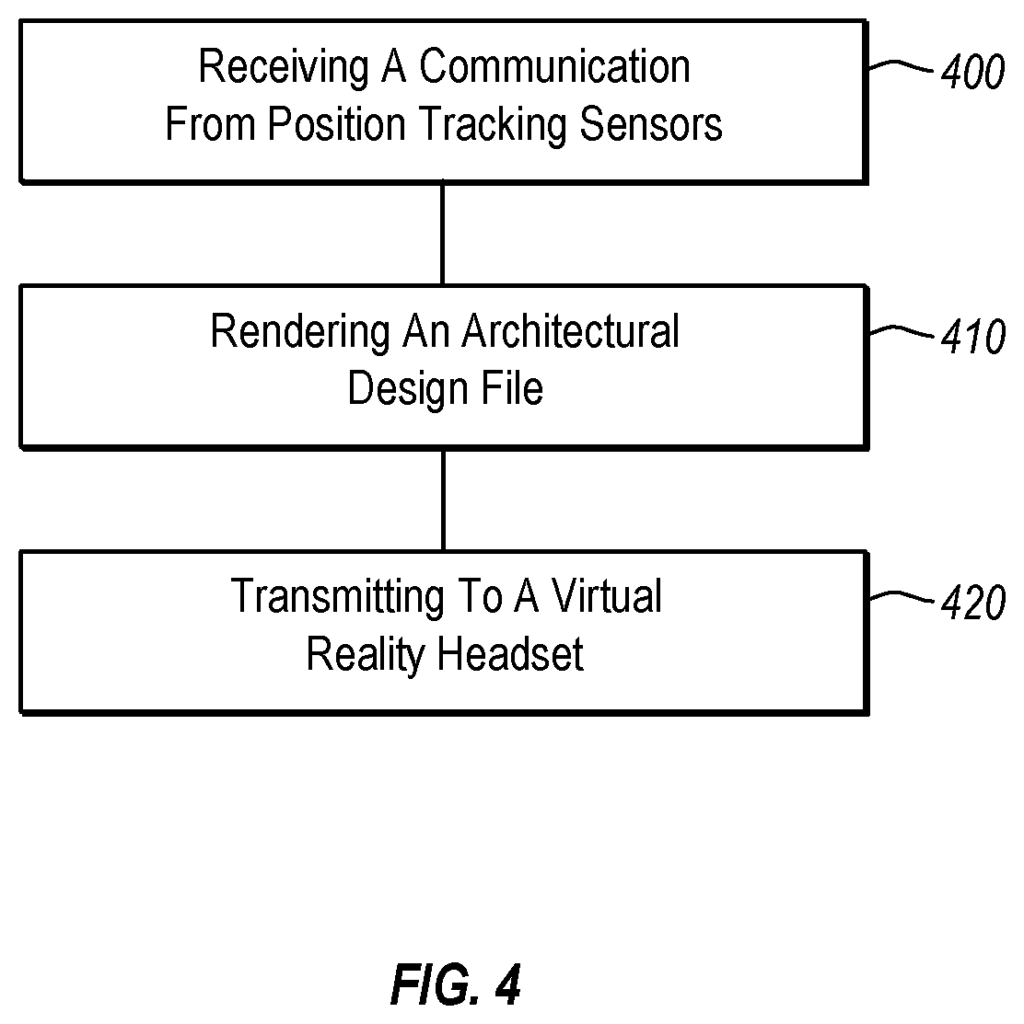
Click here to view the patent on Google Patents.
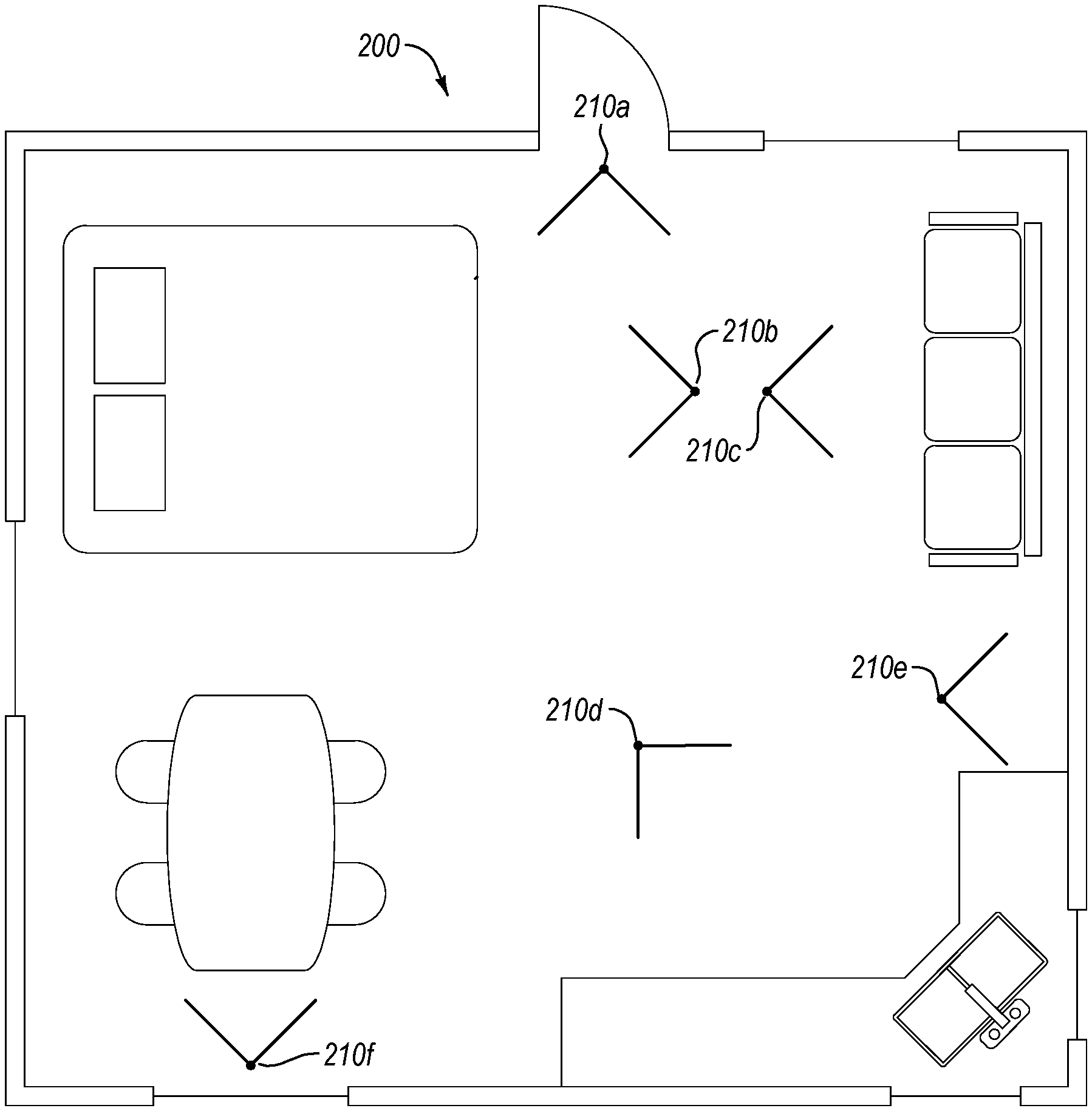
Leave a Reply